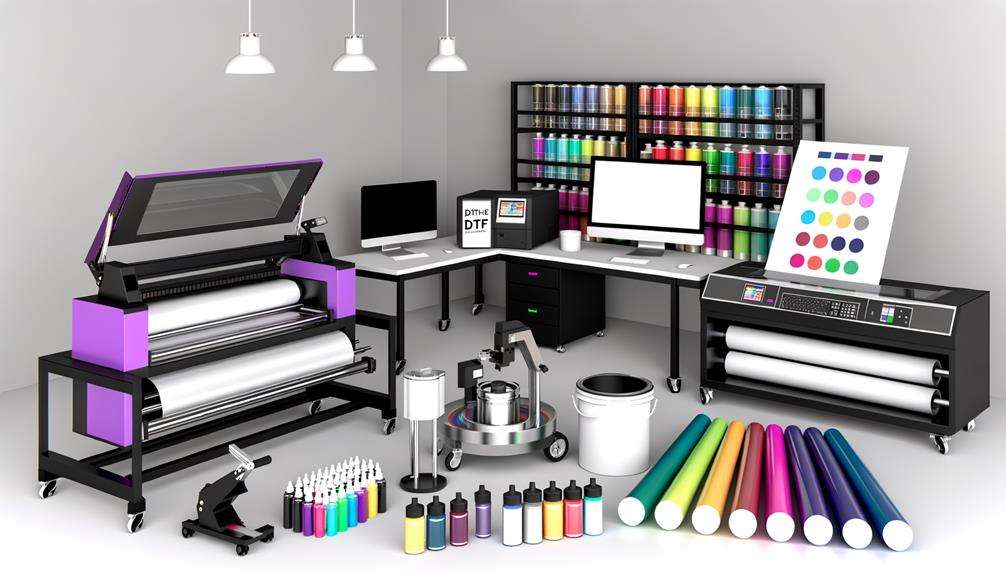
Understanding the Science Behind DTF Printing Technology
Introduction
In recent years, the world of printing has witnessed a technological revolution that has changed the way we think about print quality and versatility. One of the standout innovations in this domain is Direct to Film (DTF) printing technology. This method has gained significant traction among businesses and individuals looking for high-quality prints on various fabrics. But what exactly is DTF printing, and why is it becoming a go-to solution for many? This article aims to delve into the science behind DTF printing technology, exploring its processes, benefits, applications, and more.
Understanding the Science Behind DTF Printing Technology
DTF printing stands out for its unique approach to transferring designs onto fabrics. Unlike traditional methods like screen printing or heat transfer, DTF utilizes a specialized film that allows for vibrant colors and intricate details. The process involves printing designs onto a PET film using a direct to film printer, followed by applying an adhesive powder and curing it with heat. This results in durable and flexible prints that adhere well to various materials.
How Does DTF Printing Work?
The beauty of DTF transfer lies in its straightforward yet innovative process:

This meticulous approach ensures that every detail of your design shines through while also providing durability against wear and tear.

Benefits of DTF Printing
Versatility Across Fabrics
One of the most compelling reasons to consider DTF printing DTF transfer printing is its adaptability to various materials including cotton, polyester, nylon, and blends. Whether you're creating custom apparel or promotional items, you can rely on DTF transfers for consistent quality across diverse fabrics.
High-Quality Prints
When comparing different methods like UV DTF transfers or traditional heat transfer printing techniques, DTF is often favored for its ability to produce vivid colors and intricate designs without losing detail during application.
Cost-Effective Solutions
For businesses looking at wholesale production or commercial DTF printing services, affordability plays a key role. With lower setup costs compared to screen printing—all while maintaining high quality—DTF emerges as an economical choice.
Applications of DTF Printing
- Custom Apparel
- Promotional Products
- Home Decor Items
- Sportswear
- Accessories
From custom T-shirts to unique home decor items, the possibilities are virtually endless when it comes to applications for this versatile technology.
Choosing the Best DTF Printer
With many options available on the market, selecting the best DTF printer can be overwhelming. Factors include:
- Print Quality
- Speed
- Compatibility with Different Films
- Cost Efficiency
Investing time in research can save you from future headaches down the line!
Professional DTF Services vs DIY Options
While some may opt for DIY solutions at home using affordable equipment, professional services often provide superior results due to their expertise in handling various substrates and intricate designs.
A Closer Look at DTF Transfers
Before diving deeper into DTF transfer techniques, let’s explore some essential terminology:
What Are Gang Sheet DTF Transfers?
Gang sheets allow multiple designs to be printed on a single sheet of film; this maximizes efficiency and reduces waste while ensuring you get more bang for your buck!
What Makes Custom DTF Designs Unique?
Custom designs cater specifically to individual preferences or branding needs—ensuring no two products are alike! This personalization aspect can set businesses apart in today’s competitive market.
Technical Aspects of Direct-to-Film Printing
Printing Mechanism Explained
The mechanism behind direct-to-film printers involves precision engineering designed specifically for optimal ink application onto films—a crucial factor contributing to print quality.
Ink Composition in DTF Prints
DTF uses water-based inks enriched with pigments that yield bright colors without compromising washability or durability.

Comparing Techniques: DTF vs Other Methods
| Feature | Direct To Film (DTF) | Screen Printing | Heat Transfer | |----------------------------------|----------------------|--------------------|--------------------| | Setup Costs | Low | High | Medium | | Design Complexity | High | Medium | Low | | Fabric Versatility | High | Medium | Low | | Print Durability | High | High | Medium | | Production Speed | Moderate | Fast | Slow |
This comparison helps clarify why many businesses are transitioning towards adopting affordable DTF printing methods over others.
Environmental Considerations in Printing Technologies
As sustainability becomes increasingly important globally; understanding how different processes impact our environment should guide decisions around printing technologies too! Fortunately:
Frequently Asked Questions about DTF Printing Technology
1. What Is The Lifespan Of A Typical DTF Transfer?
Typically speaking—the lifespan varies based direct to film transfers on care but can endure up until 50 washes if maintained properly!
2. Can I Use A Regular Inkjet Printer For DFT?
No! A dedicated direct-to-film DTF transfer sheets printer equipped with suitable inks is necessary for optimal results!
3. How Does Heat Affect The Transfer Process?
Heat activates adhesive properties allowing effective bonding between fabric fibers ensuring longevity!
4. Is There A Difference Between Wholesale And Retail Pricing For Transfers?
Absolutely! Purchasing wholesale usually leads to https://eazy.s3.us.cloud-object-storage.appdomain.cloud/eazy/uncategorized/dtf-printing-vs-traditional-methods-which-is-right-for-you.html significant savings versus retail pricing due primarily due volume discounts offered by suppliers!
5. Are There Specific Fabrics That Should Be Avoided?
While most common materials work great—you might encounter issues with slippery surfaces (like silk) unless proper adjustments are made during application steps!
6. Is It Possible To Layer Multiple Transfers On One Garment?
Yes! However caution must be taken regarding thickness since excessive layering could affect flexibility/wearability adversely!
DTF heat transfers
Conclusion: Embracing Innovation In Your Prints!
In summary—understanding not just how but why certain technologies thrive within industries provides insights necessary when making educated choices regarding business solutions such as those offered through expert dtf printing services available today!
By integrating innovative approaches like direct-to-film printing into your operations; rest assured you'll reap benefits beyond mere aesthetics—quality assurance coupled with cost-effectiveness positions dft firmly at forefronts modern textile applications!
So whether you're customizing apparel or exploring new avenues altogether—embrace what makes understanding science behind dtf technology exciting—it opens doors toward unlimited creative potential waiting right around corner!